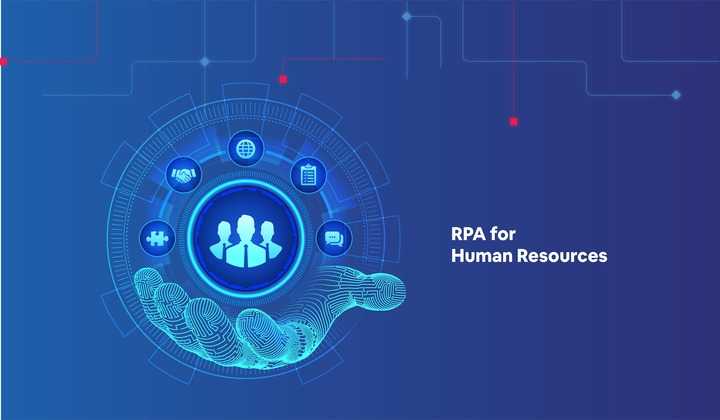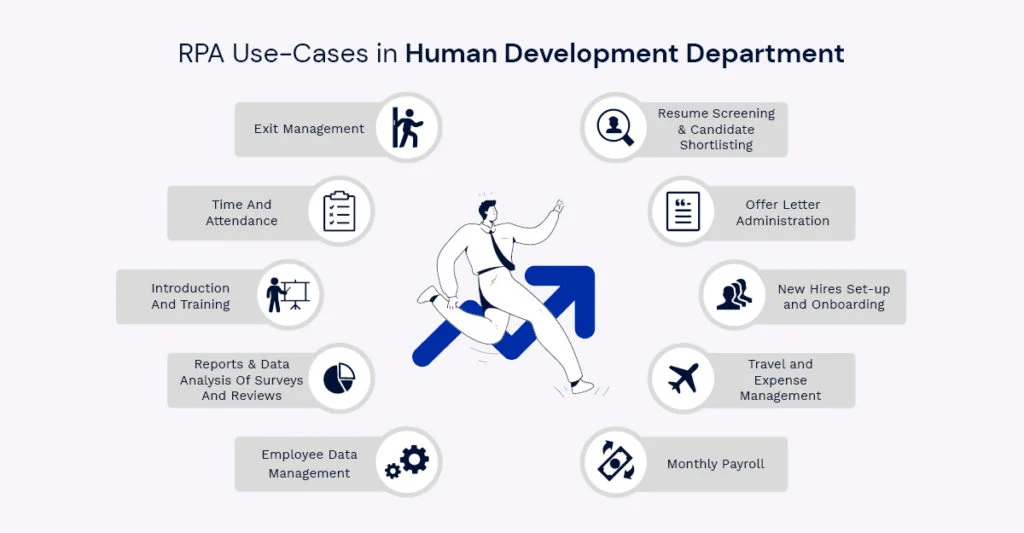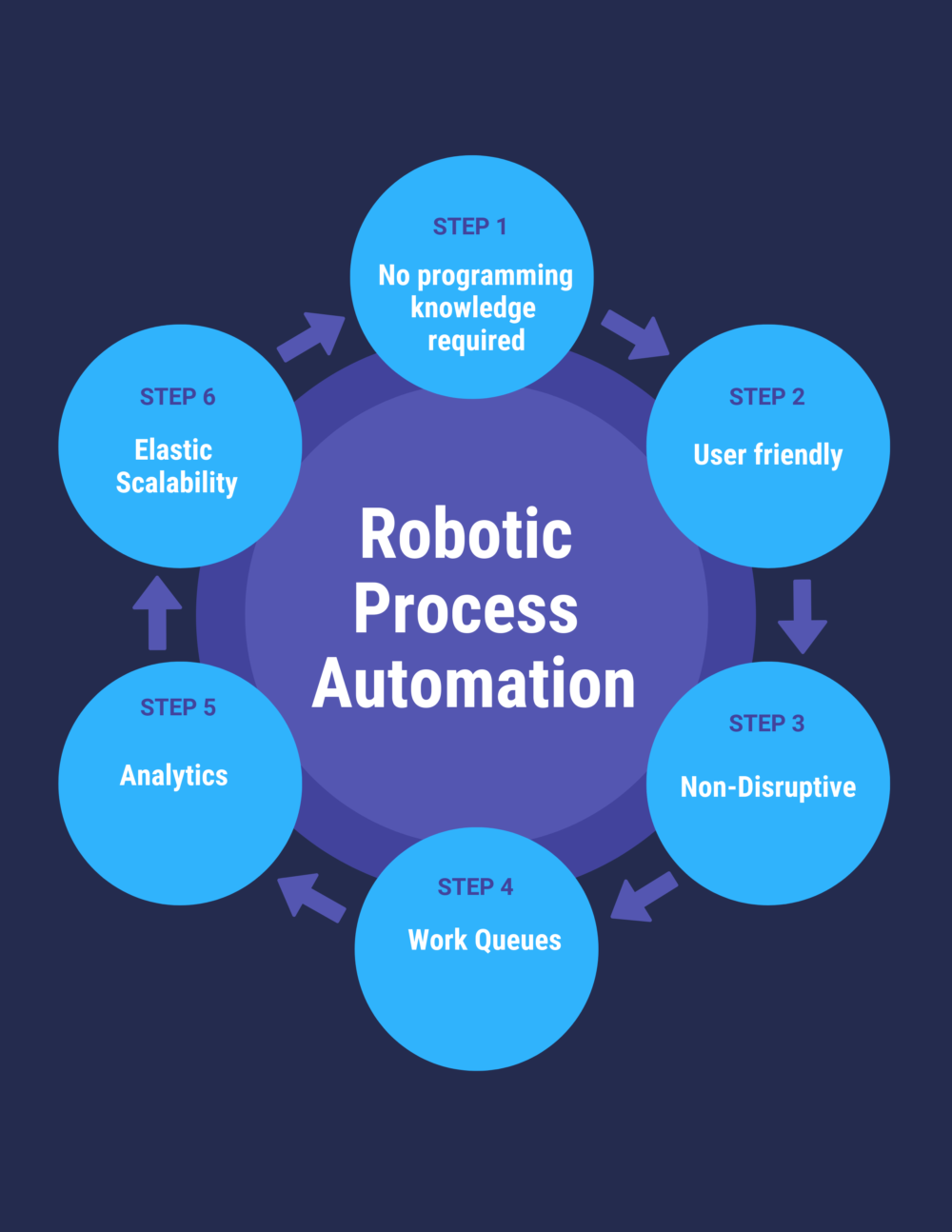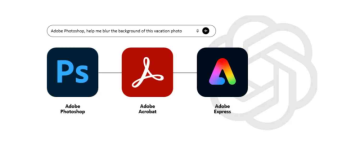In the fast-evolving digital landscape, Robotic Process Automation (RPA) is redefining how human resources (HR) functions operate—automating repetitive administrative tasks and enabling HR professionals to focus on more strategic, human-centric responsibilities. As paradoxical as it may seem, RPA is indeed putting the "human" back in human resources by liberating HR teams from monotonous workflows and redirecting their efforts toward high-value engagements like employee development, conflict resolution, and organizational strategy.

What is Robotic Process Automation in HR?
Robotic Process Automation (RPA) involves deploying software bots to automate rule-based, high-volume, and repetitive tasks with minimal human intervention. These bots replicate actions typically performed by humans on digital systems, making HR processes faster, more accurate, and efficient.
In HR, RPA can handle a multitude of routine functions—such as employee onboarding, payroll processing, compliance management, benefits enrollment, and data reporting—allowing organizations to minimize manual errors and reduce costs.

Key Benefits of Implementing RPA in HR and Payroll
1. Enhanced Accuracy and Productivity
RPA bots follow predefined rules with exceptional precision, significantly reducing the likelihood of human errors. This leads to more reliable data entry, faster processing, and a direct boost in HR productivity. With bots handling repetitive tasks, human professionals can redirect their attention to strategic HR functions, enhancing overall business performance.
2. Consistency and Standardization
One of RPA’s greatest strengths is its ability to ensure consistent output. Bots perform identical tasks without variation, ensuring uniformity across operations—a crucial factor in maintaining compliance and standard operating procedures in HR.
3. Scalability and Cost Efficiency
RPA systems are highly scalable and can easily adapt to increased workloads without the need for additional human resources. The cost per task is considerably low when automated at scale, making it an ideal solution for growing organizations.
4. Reliability and 24/7 Operation
Unlike human employees, bots do not require breaks or holidays. They can operate 24x7 with unwavering performance, ensuring uninterrupted HR services and significantly improving process reliability.
5. Flexibility and Integration
RPA solutions can seamlessly integrate into various IT environments and adapt to complex workflows, making them suitable for businesses of all sizes and structures.

Use Cases: How RPA is Transforming HR Functions
1. Resume Screening and Candidate Shortlisting
Recruitment is often time-intensive, with HR professionals manually screening numerous resumes. RPA streamlines this by automatically collecting and comparing applicant data against job-specific criteria. Bots can send interview invites to shortlisted candidates and rejection notifications to those who don’t qualify. This not only reduces workload but also enhances candidate experience.
2. Streamlined Onboarding
Employee onboarding often involves coordinating across departments and systems. RPA automates the creation of user accounts, assignment of credentials, generation of offer letters, and provisioning of IT resources. Bots can also verify new hire data across systems, reducing onboarding time and ensuring error-free execution.
3. Employee Data Management
With constantly changing employee information—new hires, promotions, and policy updates—managing data manually can lead to inconsistencies. RPA helps maintain data accuracy by automating updates across HR systems and conducting periodic data cleansing, ensuring seamless employee service delivery.
4. Payroll Processing
Payroll processing is one of the most critical HR tasks and also one of the most error-prone. RPA ensures accurate and timely payroll by cross-verifying hours worked, applying appropriate tax deductions, and reconciling discrepancies. Bots can also generate detailed reports on anomalies such as missing hours or excessive overtime.
5. Expense Management
Manual expense processing often results in delays, errors, and policy violations. RPA extracts data from digital receipts, validates them against company policies, and automates approval workflows. This reduces administrative burden while ensuring compliance and timely reimbursements.
6. Compliance and Regulatory Reporting
Compliance is a high-priority area for HR, especially in sectors with stringent labor laws. RPA automates documentation, data validation, and report generation to minimize human errors and improve audit readiness.
7. Employee Offboarding
The offboarding process includes revoking system access, generating final settlement documents, and updating payroll systems. RPA standardizes and automates these steps, ensuring no detail is missed and reducing risks during audits.
8. Induction and Training
RPA automates the induction process by creating digital employee profiles and assigning onboarding modules. Integrated with e-learning platforms, bots can track training completion, schedule sessions, and ensure compliance with internal policies.
9. Performance Management
From setting goals to calculating incentives and reviewing performance, RPA simplifies the entire performance management lifecycle. Bots can generate evaluation reports, notify stakeholders, and schedule performance reviews with minimal human involvement.
10. Shift Allowance Calculations
For employees working in rotational shifts or across time zones, calculating allowances can be complex. RPA reads swipe-in/swipe-out data from various systems and calculates allowances accurately, minimizing errors and ensuring timely disbursement.
11. Background Verification
New hire verification involves checking personal details across various databases. RPA bots automate this by cross-verifying data, creating audit reports, and updating internal systems. Multiple bots can be deployed to reduce turnaround time without compromising accuracy.
12. Attendance Tracking
Large organizations often struggle with accurate attendance monitoring. RPA verifies employee punch-in records against official logs, flags inconsistencies, and even suggests workforce redistribution during high absenteeism periods.

Best Practices for Implementing RPA in HR
a) Develop a Centralized Shared Services Model
Start by creating a centralized hub for HR processes. Automate high-volume tasks such as onboarding, payroll, and exits to enhance efficiency, reduce costs, and boost HR team productivity.
b) Begin with Selective Automation
Identify processes that are stable, repetitive, and well-documented. Focus on tasks that are measurable, low in exceptions, and executed frequently. This ensures quick wins and positive ROI.
c) Secure Executive Buy-in and Stakeholder Alignment
Success with RPA relies on collaboration. Engage leaders and cross-functional teams early to gather feedback and ensure alignment. This helps refine strategies and build organizational trust.
d) Define ROI and Set Realistic Expectations
Clarify what you hope to achieve with RPA—whether it’s cost savings, reduced processing time, or improved accuracy. Setting clear goals ensures transparency and continuous improvement.
e) Train HR Teams and End-users
Educate stakeholders on RPA capabilities and limitations. Set up self-service HR portals for FAQs and common processes to reduce dependency on HR personnel and allow faster resolution of queries.

Future Outlook: RPA in HR is Here to Stay
With the global RPA market expected to reach $3.11 billion by 2025, the technology is at the cusp of widespread adoption. By removing repetitive workloads from human hands, RPA paves the way for a more strategic and engaging work environment.
HR departments across industries are already experiencing significant improvements in accuracy, employee satisfaction, and operational cost reductions. As automation continues to evolve, organizations that embrace RPA will likely gain a decisive edge in talent management, compliance, and employee engagement.
Robotic Process Automation is not merely a technological advancement—it’s a strategic enabler in transforming human resources into a more agile, efficient, and people-centric function. By automating mundane tasks and creating streamlined workflows, RPA empowers HR professionals to focus on what truly matters: building a thriving workplace culture, attracting top talent, and driving organizational success.
If your organization is looking to modernize HR processes, now is the time to integrate RPA and experience a revolutionary leap in operational efficiency and employee satisfaction.
With inputs from agencies
Image Source: Multiple agencies
© Copyright 2025. All Rights Reserved Powered by Vygr Media.























